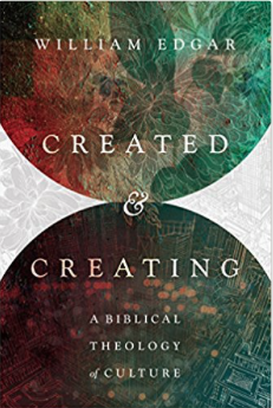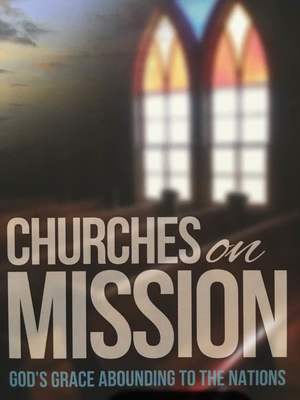posts
 Created and Creating: A Biblical Theology of Culture. By William Edgar. Downers Grove: IVP Academic, 2017. x + 262 pp., $24.00 paper. [note: this review was originally published in the Journal of the Evangelical Theological Society 60:3 (2017): 607-609]. Created and Creating is a new work from William Edgar, professor of apologetics at Westminster Theological Seminary (Philadelphia). Edgar’s previous books include A Transforming Vision: The Lord’s Prayer as a Lens for Life, Schaeffer on the Christian Life, and Truth in all Its Glory: Commending the Reformed Faith. Making a case for Christian cultural engagement, Edgar’s stated thesis is that “the cultural mandate, declared at the dawn of human history, and reiterated throughout the different episodes of redemptive history, culminating in Jesus’ Great Commission, is the central calling for humanity” (p. 233). With this focus, Edgar’s project bears resemblance to some other recent works including: 1) Andy Crouch’s Culture Making (2008), which invites Christians to be constructive contributors to culture; 2) Rod Dreher’s new work, The Benedict Option (2017) that actually urges believers to disengage from politics and to take shelter from the secular world; 3) Richard Niebuhr’s older theological work, Christ and Culture (1951) that discusses the various angles in which Christ relates to a given culture. Cultural engagement has also been a key theme in James K.A. Smith’s works, including his recent book, You are What You Love (2016). What makes Edgar’s work distinct is his primary emphasis on a biblical theology of culture. In the first of three parts (“parameters of culture”, chaps. 1-2) Edgar surveys nineteenth and twentieth century scholarship, showing the development of cultural studies in general. Next, he summarizes the thought of key twentieth-century theologians (including Lewis, Kuyper, Schaeffer, Conn) who have written about culture from a biblical perspective. In part 2 (“challenges from Scripture,” chaps. 3-7), the author carefully works through Scripture to explore the tension between not being conformed to the world (contra mundum), while also being a winsome participant in and shaper of culture. Finally, in part 3 (“the cultural mandate,” chaps. 8-12), Edgar fleshes out his thesis to show the cultural mandate at work throughout biblical redemptive history from the garden of Eden to the eternal state. There are many things to commend about this work but I will focus on three areas. First, since the author grew up in France and later served as a missionary there, he demonstrates a good grasp of the products of western culture (e.g., art, music), which he draws freely upon to make illustrations in the book. Also, particularly in the first section, he emulates his mentor Francis Schaeffer in being able to understand European philosophy and converse with these ideas from a biblical perspective. Second, Edgar succeeds in accomplishing his aims of presenting a biblical theology of culture by doing excellent exegetical work throughout the book. His study is rich with reflection on particular passages, including biblical terms and themes, all within the context of biblical redemptive history. This thorough and sober study of Scripture might provide the best response to date to the claims of cultural disengagement laid out in Dreher’s Benedict Option even though that is not Edgar’s specific aim. Finally, the author’s discussion on the image of God in man certainly critiques the historic social sins of slavery and racism though, again, that is not his deliberate purpose. A final strength was Edgar’s discussion in chapter 12 on “culture in the afterlife.” Most reflections on Christian cultural engagement focus on the here and now; so it was thought provoking and even inspiring to think about culture making in heaven. Edgar accomplishes the goals of his study by exploring the cultural mandate even in the eternal state. To these affirmations, I add three areas of constructive critique. First, though Edgar deeply engages Scripture and western philosophy, the Christian voices that inform much of his thought are almost entirely white, western, male, and Reformed. While no disrespect is meant for the likes of Murray, Kuyper, Vos, Frame, Conn, Schaeffer, Keller, and others, if Edgar had engaged other diverse global theological voices, then his book would have been strengthened. Second, I was hoping that the third part of the book would do more to unpack a theology of work. Although the title of chapter 8 (“first vocation”) hints at such a discussion, and a paragraph in chapter 12 (p. 218) only briefly raises the issue of work, this reader would have appreciated more biblical and theological reflection on vocation. Finally, in chapter 12, Edgar’s assessment of Augustine’s thought on cultural engagement from City of God appears incomplete. Edgar writes: “Yet [Augustine’s] dichotomy between the two cities, based on the two loves, leaves the reader to believe the present world is a confinement, a place of captivity, as we await immortality” (p. 221). While Augustine regarded believers as temporary pilgrims in the earthly city who yearn for the heavenly city, he also affirmed that actively living in the earthly city prepares the believer for heaven. Also, Augustine encouraged believers to actively participate in society in order to influence the earthly city with heavenly values. Augustine applied these values in his own ministry by serving as a monk-bishop and living in a monastery (in the bishop’s house) near Hippo’s center. There he and the brothers regularly open their doors to visitors and demonstrated hospitality. Further, under the Theodosian code, Augustine functioned as a judge and mediator in the Roman courts so he could influence local society with biblical values (cf. Augustine, On Christian Doctrine 1.4.4; Sermon 88.15; City of God 22.21.16; 21.15; Letter 133; Possidius, Life of Augustine 19). In summary, William Edgar has written a thoughtful introductory work on a biblical theology of culture. This would function as a good supplementary text to an Introduction to Mission or Biblical Theology of Mission course at the seminary level, especially if it is read alongside other works from diverse global theologians.  The Evangelical Missiological Society Compendium (EMS 25) was published last week. Churches on Mission: God's Grace Abounding to the Nations (EMS 25) captures some of the papers from the 2016 EMS national conference. I had the opportunity to write chapter 2 entitled, "When the Church was the Mission Organization." My chapter intro reads: Critical observers of mission history remark that following the sixteenth-century Reformation in Europe, one reason for the initial inaction of Reformed Protestants in global mission was the lack of missionary sending structures. Roman Catholics on the other hand possessed a number of sending structures—most notably monastic orders (e.g., Franciscans, Augustinians, Dominicans, Cistercians, and Jesuits) that were formed in the medieval period for the purpose of sending witnesses to the world. So how did mission sending happen and what structures were in place in the early and medieval church prior to the rise of monastic missionary orders? In this article, I argue that the church itself was the key organism and catalyst for mission sending. In doing so, I offer an alternative conclusion to Ralph Winter’s (Winter 1999, 220-229) popularly accepted claim that there were two structures of redemption in mission history—modalities (e.g., churches) and sodalities (e.g., monastic movements)—and argue that the church was the sole means of sending. To make the case, I will highlight the examples of five missionary-monk-bishops who served between the fourth and eighth centuries: Basil of Caesarea (fourth-century Asia Minor), Patrick (fifth-century Ireland), Augustine of Canterbury (sixth- and seventh-century England), Alopen (seventh-century China), and Boniface (eighth-century Germany). Though not exhaustive, these cases serve as representative models for early Christian and medieval Christian practice in the global church. |
Archives
November 2023
|
 RSS Feed
RSS Feed
